This article will explore the different types of commercial lighting fixtures and their benefits, applications, and viability for your business.
Top 12 Types of Commercial Lighting Fixtures
Here is a list of the top commercial lighting fixtures you need to know.
1. Recessed Lights
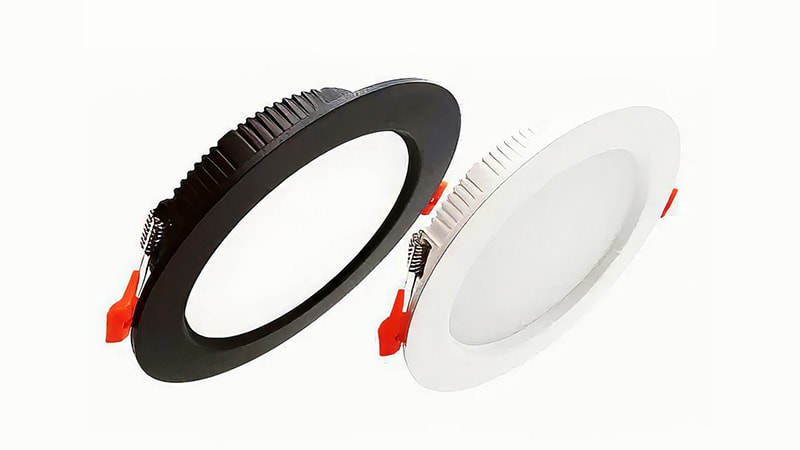
Recessed lights are fixtures that nest into the ceiling or wall for a seamless design. They are a popular solution for residential and hospitality lighting. Recessed ceiling lights provide soft ambient lighting to a location without clashing with the interior design of the building.
There are many types of recessed lighting designs, each with its unique benefits. Most recessed lights vary based on the housing design, called a can, or the trim design.
A similar lighting solution, troffer lighting, also uses a recessed design. However, troffer lights are large box-shaped and generally installed in drop ceilings for office spaces.
2. High Bay Lights
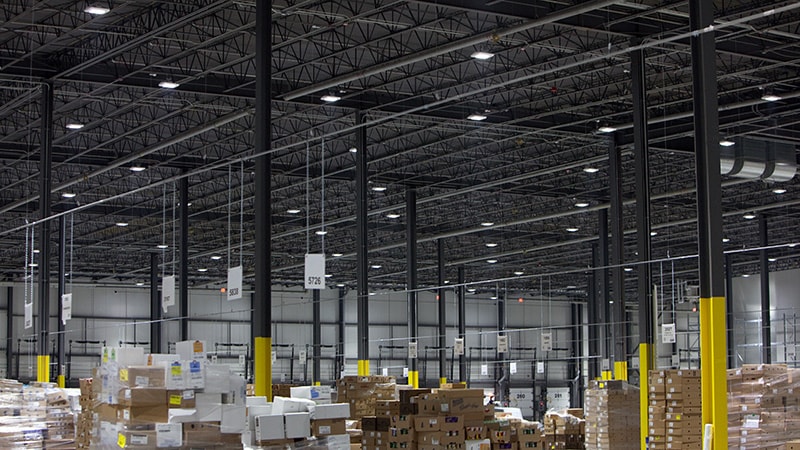
High bay lights are large downward-pointing fixtures illuminating industrial spaces with high ceilings. Common applications for high bay fixtures include the following commercial spaces.
- Warehouses
- Storage Facilities
- Factories
- Airport Hangars
- Gymnasiums
- Event Halls
High bay fixtures have to illuminate floor space from 20-45 feet. At such a height, the light beam loses its maximum brightness by the time it hits the floor. Thus, most high bay lighting systems use fixtures with a beam angle of <120°.
3. Panels Lights

Panel lights are the big brother to recessed lighting. The fixtures are large with a square profile and filled with energy-efficient LED lights. These fixtures are designed to sit flush with drop ceilings and provide greater illumination than recessed lights.
The larger panel lights create a more evenly and brightly lit space, making these fixtures ideal for schools, hospitals, and office spaces.
Troffer lights share many similarities with panel lights, except their design is less sleek and more industrial. Panel lights are low-profile and only use LED lights. Troffer fixtures use standard T5 and T8-sized bulbs, which can be LED, fluorescent, or even incandescent.
4. Wall-mounted lights
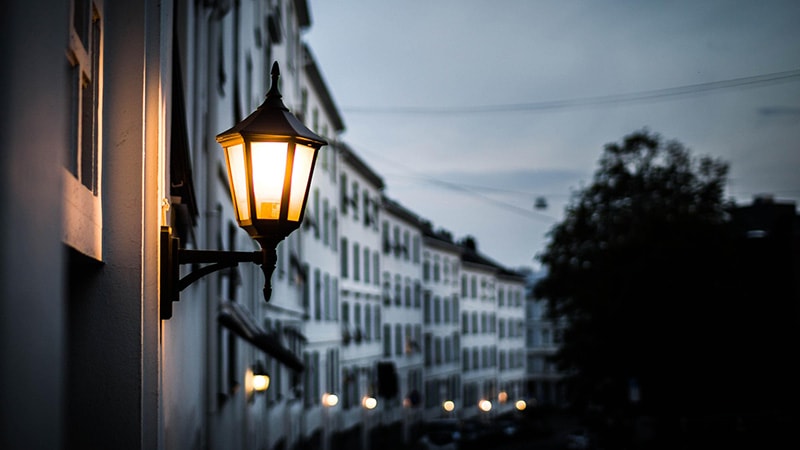
Wall-mounted lights are an entire field of lighting design consisting of many fixture designs catering to different industries and applications. Here are some of the most popular wall-mounted lighting fixtures.
Outdoor Lighting Fixtures
Wall packs are robust lighting fixtures designed for outdoor lighting applications. They provide bright, uniform illumination for parking lots, walkways, and building exteriors.
Indoor Lighting Fixtures
Wall-mounted lamps are a popular option for accent lighting. They come in elegant designs that act as wall decorations with lighting capabilities.
Wall Washers
Wall washing is a unique lighting design that uses various ceiling and wall-mounted light fixtures to illuminate a wall. Wall washers are better at highlighting the design and texture of a wall. Hence, they widely use facade lighting for commercial buildings.
Using wall washers inside the building results in lighting bouncing off the walls and creating zero glare ambient illumination.
5. Area Lights
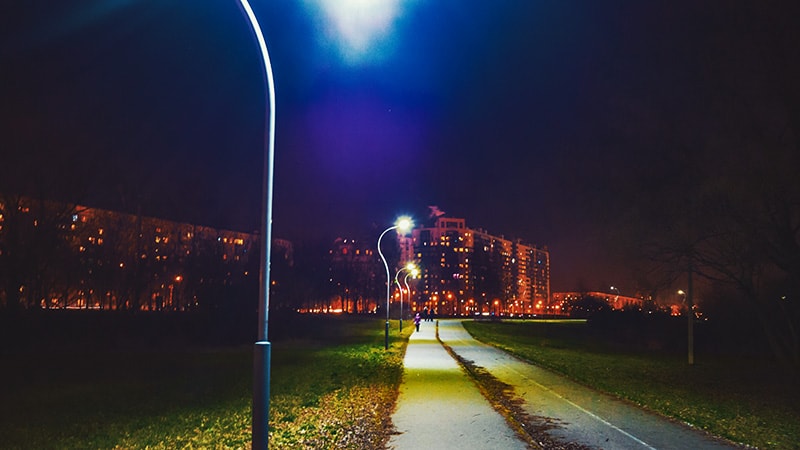
Area lights are powerful light fixtures generally pole-mounted and used to illuminate large spaces, such as parking lots, streets, and parks. They are one of the best commercial lighting solutions, providing safety and security through even illumination.
Area lights are divided into five categories based on their light coverage.
6. Pendant Lights
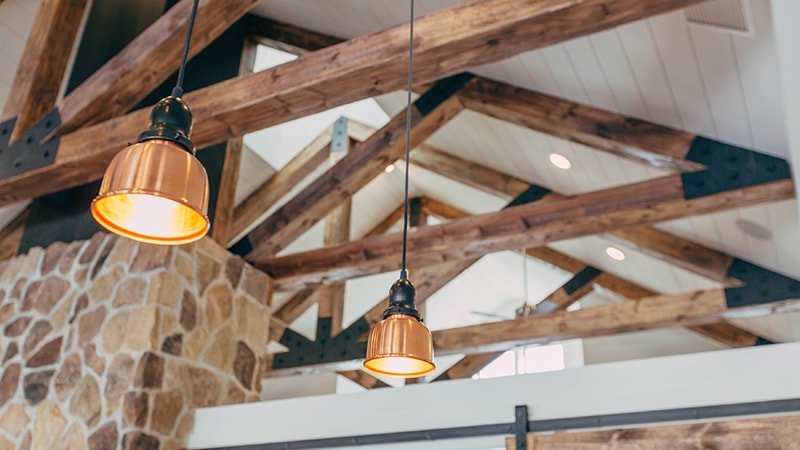
Pendant lights are suspended light fixtures that hang from a tall ceiling and provide focused light to an area. These fixtures are designed to provide localized illumination in an otherwise large indoor space.
For example, restaurants use low-brightness mood lighting to create a certain ambiance. Such lighting is great for aesthetics but becomes a hindrance when guests are dining. Pendant lights provide task lighting that illuminates the dining table without interfering with the overall lighting design.
7. Flood Lights
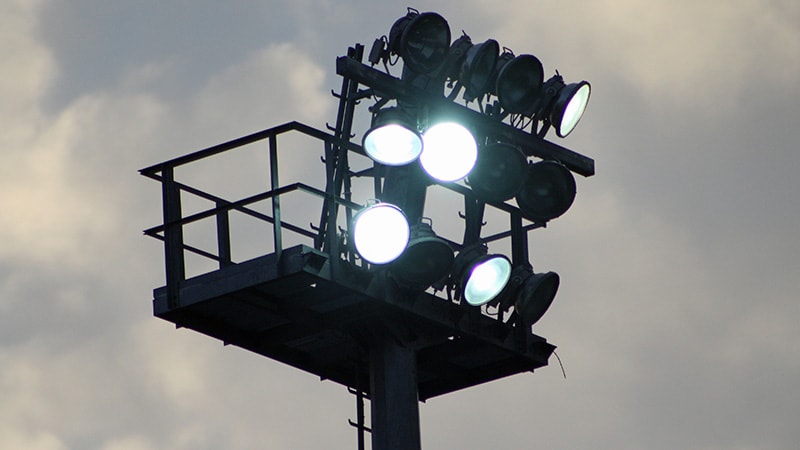
Flood lights are high-power illumination devices that provide a wide coverage area from a small point of origin. These fixtures used wide beam angles to maximize their light coverage and high wattages to provide even brightness.
- Beam Angle – 60° to 120°
- Power Draw – 50W – 600W
These fixtures provide wide-angle lighting, improving their efficacy as safety lights at construction sites and security lighting for building exteriors.
However, the most popular commercial LED floodlight application is sports arena illumination, where a few dozen lights can illuminate the entire field from the sides. Alternative commercial LED lighting solutions, such as area lights, would require poles in the middle of the sports field (not sensible) to provide the same illumination level.
8. Spot Lights
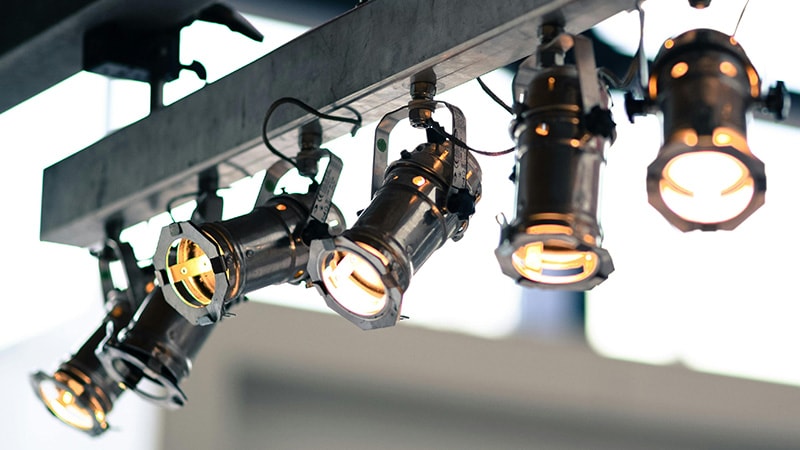
Spotlights are among the most common commercial LED lighting products. They can illuminate a space with a concentrated light beam from far away. These fixtures use a narrow beam angle design that allows the light to cover a larger distance without losing its luminance.
Spotlights are often used in commercial outdoor lighting applications such as security, landscape, and concert lighting. Indoor applications typically consist of stage lighting for theaters or movie sets.
9. Bollard Lights
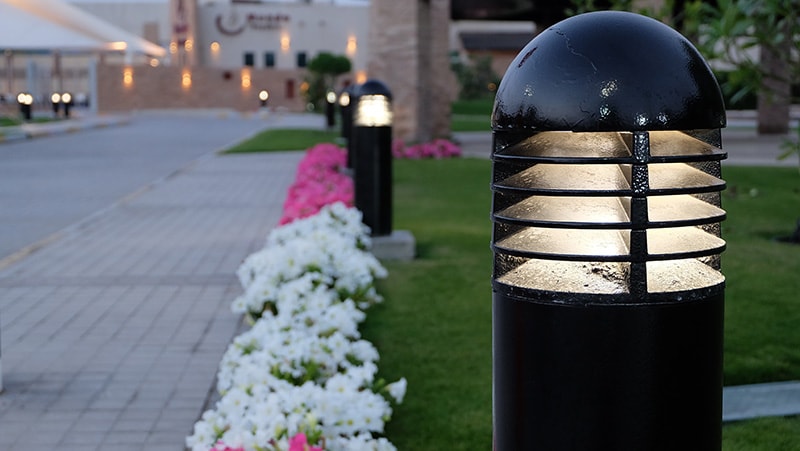
Bollard LED lights have a unique fixture design that combines illumination and road safety functionality. These tall and sturdy fixtures are mounted upright on the ground and are used for pathway illumination. All the wiring for the bollards runs through underground channels where it stays safe and out of sight.
Most commercial and industrial buildings use bollards to protect their outdoor spaces from unwanted vehicle entry. Bollard LED lights are also great for illuminating driveways and walkways; they provide excellent safety and visual comfort.
10. Canopy Lights
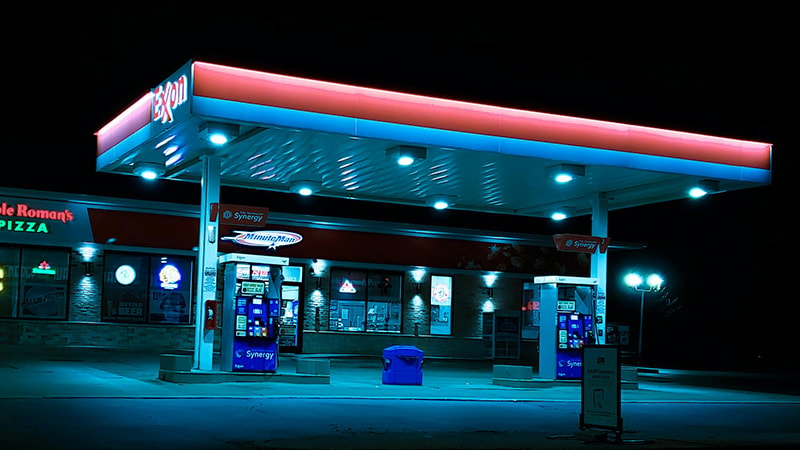
In commercial buildings, canopy refers to the overhanging sections of a structure. Canopy LED lighting fixtures are outdoor installations on the underside of a canopy. The most popular application of canopy lighting is in gas stations, which lack any other light mounting areas.
These LED lights stay dormant during the day and turn on at sunset. Canopy lights are also used for mall exteriors, open corridors, vertical farms, and more.
11. Track Lights
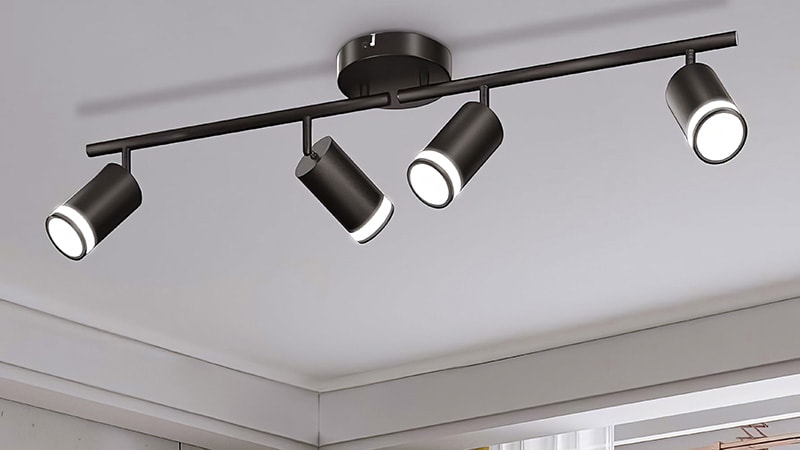
Track lighting uses a series of spotlights mounted to a horizontal track. The lights can freely move along the track, allowing easy customization options.
Track lights are a less intrusive way of adding downlighting to a space. Other solutions, like recessed lighting and ceiling panels, require heavy ceiling modification. In contrast, track lighting only requires a few mounting points.
12. Exit Signs
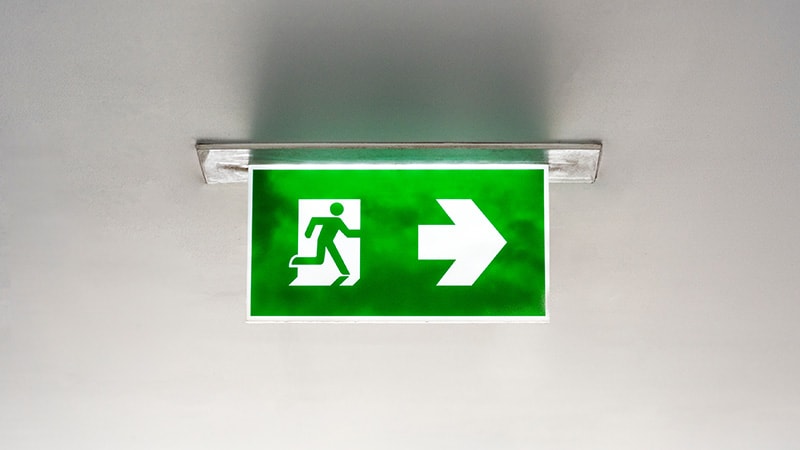
A list of commercial LED lighting is incomplete without the mention of exit signs. Although not a traditional light fixture, LED exit signs are a core element of every commercial space.
In the United States, commercial buildings have to legally provide exit signs at every point of an escape route to ensure occupant safety in an emergency.
Exit signs can have any color if they are bright, well-placed, and have an independent backup power supply.
Types of Lighting Solutions
Moving away from commercial lighting fixtures, we set our sights on the technologies that power these illumination devices.
The following light bulb options are commonly used for commercial applications.
| Bulbs | Energy Efficiency | Initial Cost | Life Span | Color Accuracy |
|---|---|---|---|---|
| Incandescent | Very Low | Very Low | Short | Very Good |
| Halogen | Low | Very Low | Short | Very Good |
| Fluorescent | High | Low | Long | Poor |
| Induction | Medium | Medium | Short | Good |
| Metal Halide | Medium | High | Short | Good |
| LED | Very High | High | Very Long | Very Good |
1. Incandescent Bulbs
Incandescent bulbs are the oldest lighting technology. They consist of a tungsten filament encased in a vacuum-sealed glass jar. As current flows through the tungsten wire, a warm yellow hue glows.
The filament can easily reach a temperature of 2,000º C or 3,600º F, and the vacuum prevents the tungsten wire from burning. These bulbs are low-cost, easy to break, and energy-inefficient. Nearly 90% of electricity an incandescent bulb consumes is lost as heat energy.
2. Halogen Bulbs
Halogen bulbs are an upgrade to the common incandescent bulb. They seal the tungsten filament in a glass enclosure filled with inert halogen gas, which results in a brighter bulb at the same power draw.
Both incandescent and halogen bulbs have short lifespans and poor energy efficiency. As commercial applications use hundreds of light fixtures, these traditional lighting solutions’ operational and maintenance costs become significant.
These older bulbs are primarily limited to old buildings that cannot be retrofitted with LED lights.
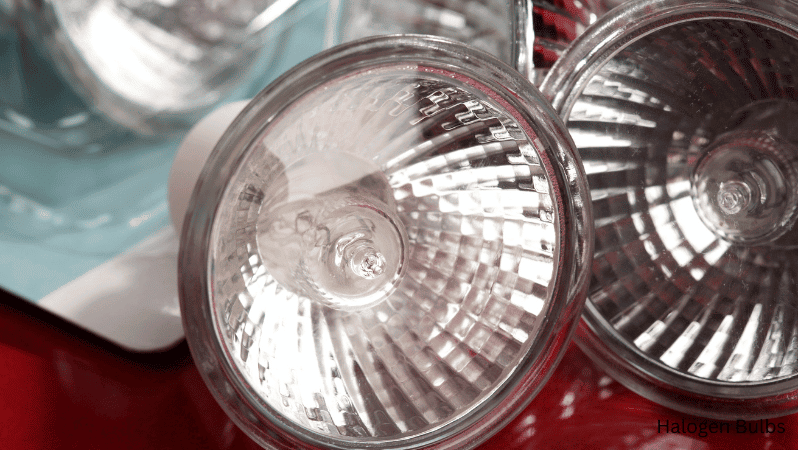
3. Fluorescent Tubes
Fluorescent lighting uses glass tubes filled with low-pressure mercury vapor. Electrodes at the end of the glass tube provide a strong alternating current (AC) that excites the enclosed gases until they radiate light. These bulbs have a higher energy efficiency and lifespan than incandescent bulbs but lack good color accuracy.
To learn more about color accuracy under artificial light, check out our article on Color Rendering Index (CRI).
4. Induction Lamps
Induction lamps use phosphorus vapors enclosed in a glass tube. Unlike fluorescent lighting, which uses electrodes, they use electromagnetism to induce energy into the bulbs.
These bulbs produce higher-quality light than fluorescents but have reduced energy efficiency under extreme temperatures.
5. Metal Halide Lamps
Another variation of fluorescent lights is metal halide lamps. They use a gaseous mixture of mercury vapor and metal halide to produce a brighter light with a better color rendition.
Metal halide lamps are preferred for their specific and consistent color profile. While this color accuracy is great for mood lighting, their glass exterior makes them susceptible to impact damage. Still, metal halide lamps are a cost-effective replacement for incandescent bulbs.
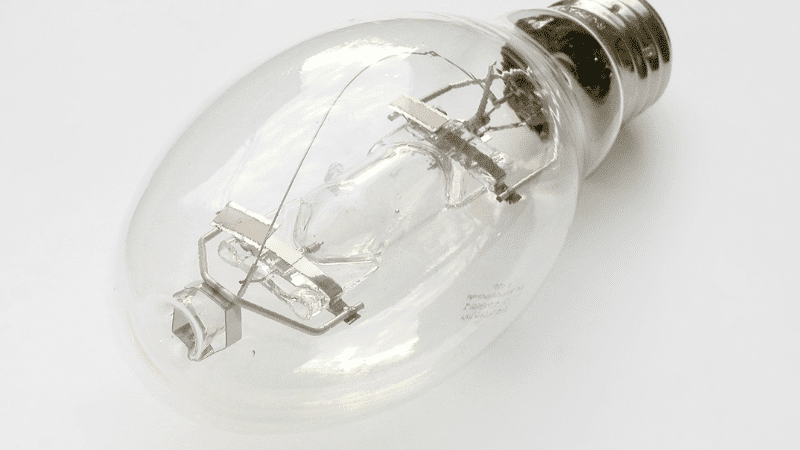
6. LED Lights
LED or Light-Emitting Diodes are semiconductors that release light when exposed to a DC power source. LED lights are incredibly energy efficient and consume one-tenth of the power of a traditional incandescent bulb.
Commercial LED lights save businesses thousands of dollars in electricity bills annually. They are durable, long-lasting, and have incredible color rendition.
Although their initial cost is slightly higher than traditional solutions, LED bulbs compensate for their shortcomings with features like smart controls, light dimming, addressable colors, and more.
Conclusion
The commercial lighting industry serves a diverse range of applications and lighting needs. From restaurants looking for cozy mood lighting to warehouses wanting practicality task lighting, commercial lighting has something to offer everyone. Understanding the applications of these different fixture designs will help businesses choose the right one for their commercial space. Businesses will also benefit from LED commercial lighting solutions’ huge energy savings.
Brighten Your Commercial Space with RC Lighting!
RC Lighting is a titan of the LED lighting industry. For over a decade, we have been delivering high-quality lighting solutions to a diverse international clientele. Our Indoor and Outdoor Lighting fixtures are made with the best components and comply with international safety standards such as ISO9001.
For additional reliability, we offer IP-certified fixtures for outdoor spaces with a standard five-year warranty.
Take your business to new heights with RC Lighting. Contact Us Now!



